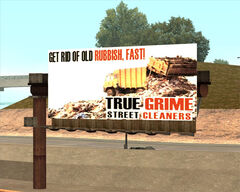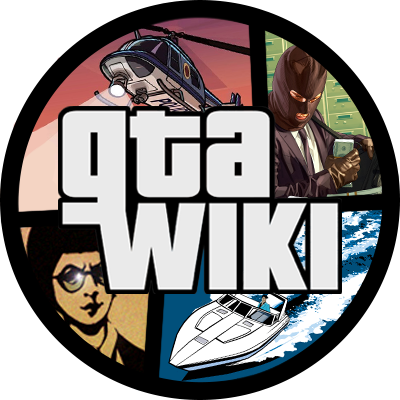A Grand Theft Auto clone, also known as a GTA clone, is a term used by gamers and video game critics for a game that emulates, or has gameplay elements similar to the Grand Theft Auto series, following the success of Grand Theft Auto III in 2001.
Description[]
Specifically, a GTA clone is typically an action crime-drama open-world video game that usually contains driving and shooting mechanics, with a non-linear set of storyline missions and a great number of side-missions and activities displayed on a mini-map for the player.
** Some critics have extended the GTA Clone label to the Driver series, despite that series starting in 1999, two years before the release of Grand Theft Auto III. While Grand Theft Auto 2 used a top-down perspective, Driver started as a 3D series. But since technology advances, GTA III could have been released as a 3D game without the influence of the Driver series.
The term has also been applied to games that, although they do not involve violence or wielding weapons, still have elements similar or otherwise lifted from the 3D Universe, such as Wreckless:The Yakuza Missions (2002), RoadKill (2003), Tony Hawk's Underground (2003), Spider-Man 2 (2004), Bratz: Rock Angelz (2005) (which one of the reviews even called "GTA for girls", and, coincidentally, uses the same RenderWare engine as the 3D Universe), Bratz: Forever Diamondz (2006) and Jaws Unleashed (2006) (which is sometimes referred to as "Grand Theft Shark").
Origins[]
Open-world, 3D action-adventure games existed as a predominantly European genre for many years prior to the release of any similar game from DMA Design. Mercenary (1985) featured an open-world, non-linear quest in which the player could steal vehicles, shoot, and explore freely, including conflicts with the authorities. The Terminator, released in 1990, was a free-form, open-world game that set its action in a modern-day city that extended for miles, and included the ability to fire at civilians and steal cars. This game was also notable for being among the first American-developed games to feature these elements. Hunter continued the evolution into something more closely resembling the GTA series, with full 3D, third-person graphics and the ability to steal many different vehicle types.
DMA Design began pursuing open-world game design with the first Grand Theft Auto, which allowed players to commandeer various automobiles and shoot various weapons within a mission-based structure. Unlike later games in the series, and indeed many earlier influences, the first two GTA games were 2D. In 1998, DMA moved many of these design concepts into a 3D world with Body Harvest. Grand Theft Auto III took the gameplay foundation of the first two Grand Theft Auto games and expanded it into a 3D world, and offered an unprecedented variety of minigames and side-missions. The title was a much greater commercial success than its direct precursors, and its influence was profound. As such, Grand Theft Auto III is credited with popularizing this genre, let alone inventing it. Its release is sometimes treated as a revolutionary event in the history of video games, much like the release of Doom nearly a decade earlier. GamePro called it the most important game of all time, and claimed that every genre was influenced to rethink their conventional level design.
Definition[]
Calling a game a "Grand Theft Auto clone" is sometimes considered unfair or insulting. This is because reviewers sometimes use this term to suggest that the "clone" is a mere imitation, designed for the sole purpose of capitalizing on the success of the Grand Theft Auto series. However, this term can also be used as a neutral description of a game, which can range from good to bad. Reviewers have used "Grand Theft Auto clone" to describe games that rest on their own merits, and do not necessarily dismiss the entire class of games as mere imitators.
Games of this type are sometimes defined under the broader terminology "open-world games" or "sandbox games". However, many games that predate Grand Theft Auto III, such as Metroid from 1986, are also called open-world games, while games like SimCity have been called "sandbox games". Conflictingly games such as Grand Theft Auto III and Body Harvest are credited with inventing this genre more than a decade later. Furthermore, reviewers have stated that this genre does not include every game with a freely explorable world and that this genre is much more specific, thus excluding the free-roaming titles that take place on foot such as Spider-Man 2 and The Incredible Hulk: Ultimate Destruction from this class of games. The terminology is inconsistent, sometimes including any game with open level design, while other times focusing on a specific genre created at the turn of the century.
Without clear classifications to describe the genre popularized by Grand Theft Auto, reviewers have created a number of alternate names for this genre. Some reviewers have focused on the pervasive criminal themes and content in the genre, using terminology such as "crime games", "crime-based action games", and "gangsta genre". Other journalists have emphasized gameplay by describing the genre as "free-roaming action-adventure games", "driving-and-shooting games", and "driving-action hybrids".
Some games that are considered Grand Theft Auto clones or share many similar gameplay features (such as the Just Cause series or the Saints Row series) should not be considered a complete copy of the game. For example, despite being an open-world action game with vehicle hijacking, conflicts with police, and missions from criminal factions, Just Cause is more styled like an action movie with an emphasis on stunts, gadgets, and explosions. Saints Row, despite being almost exactly like Grand Theft Auto in gameplay, is extremely comedic, outlandish and much less realistic than the GTA series.
Rockstar's Response[]

Billboard in GTA: San Andreas mocking True Crime: Streets of LA.
As a result of such similarities, Rockstar Games has placed several Easter eggs to mock the competition.
In Grand Theft Auto III, the player is tasked with the mission Two-Faced Tanner, where they must kill a "strangely animated" undercover cop. The "Tanner" character is described as being "totally useless outside of his car", a reference to the lack of on-foot action in Driver 2. Rockstar even went so far as to give Tanner a female walking animation.
In Grand Theft Auto: Vice City, during the mission "Autocide", the targets that Tommy Vercetti must kill are subtle references to the main characters of Driver 2 (Dick Tanner, after Tanner) and The Getaway (Marcus Hammond and Franco Carter, after Mark Hammond and Frank Carter). Driver 3 responded by including ten hidden enemies named "Timmy Vermicelli" (after Vice City protagonist Tommy Vercetti), who wore waterwings (referencing the lack of swimming in GTA III and VC).

The man playing the game insults Refractions (Reflections Interactive).
As a mockery of Driver 3, Grand Theft Auto: San Andreas included a mission where, while breaking into Madd Dogg's mansion, there is a man playing an (unseen) video game and making fun of the way the main character walks (Tanner's walking animations were often criticized) and asking how "Refractions" (A spoof of Reflections Interactive, the designers of the Driver series) could "mess up so bad".
Luxoflux, the developer of True Crime: Streets of LA, also responded by putting up billboards in their game mocking the Rockstar Games logo used to advertise jockstraps around Los Angeles, California. In response to the "Jockstrap" billboard, another San Andreas Easter egg mocks True Crime. This is in the form of the True Grime Street Cleaners company which is widely advertised on billboards around the state. There is also a vehicle cheat code on the PC version, "TRUEGRIME", that spawns a garbage truck on input, mocking True Crime. One mission features Ryder, before entering and robbing a house, crying "Yeah, yeah, we gotta do it ninja style.", a coin phrase for the True Crime protagonist, Nick Kang. And in a cemetery in San Fierro, gravestones with "R.I.P. Opposition, 1997-2004" can be seen, as Rockstar implies that San Andreas has "killed" the competition. Luxoflux again referenced GTA and its use of remote-controlled vehicles in the GTA III era in True Crime: New York City, by having the protagonist, Det. Marcus Reed, say at the start of a mission: "Now I gotta be a cab driver for this fool? Next thing you know I'll be flying remote controlled toys and shit." Another reference in True Crime: NYC has a driver yelling "what the Blue Hell are you doing?!" when Marcus hits his car, mocking the Blue Hell glitch in the GTA games.
When Saints Row 2 was released in 2008, Rockstar did not have time to respond as THQ ran a television commercial that mocked Grand Theft Auto IV for some of its features, mainly Roman Bellic's phone calls. No controversy came of this, and no actual footage of GTA IV was shown, but the ad did feature the Pricedown font, which is the font used on all GTA logos since GTA III.
Some time after both Saints Row IV and Grand Theft Auto V were released, there was a DLC for Saints Row IV on PC named "GAT V" which mocked GTA V for its absence on that platform at the time.
